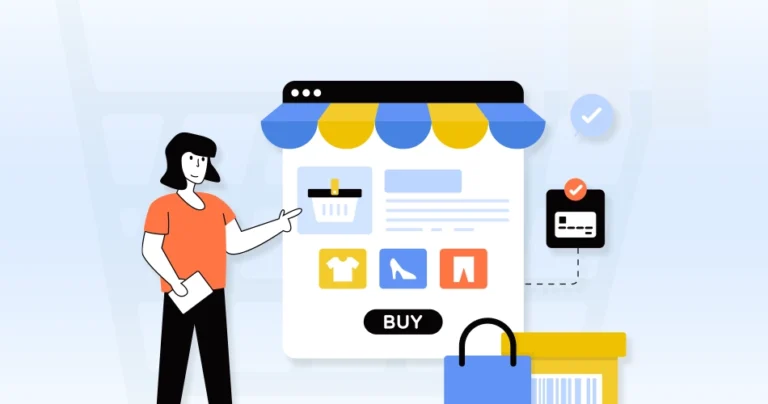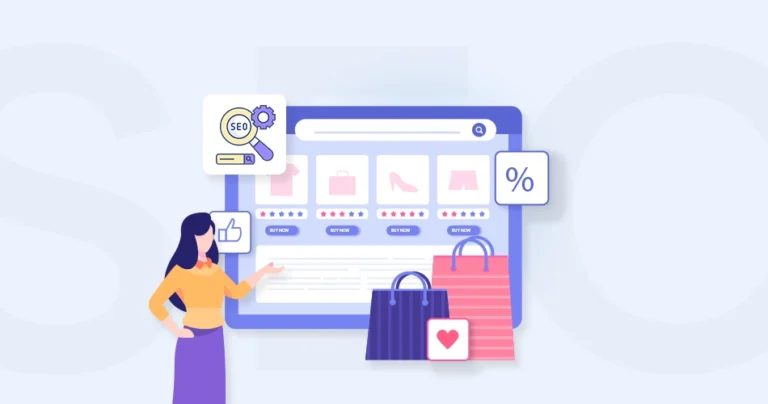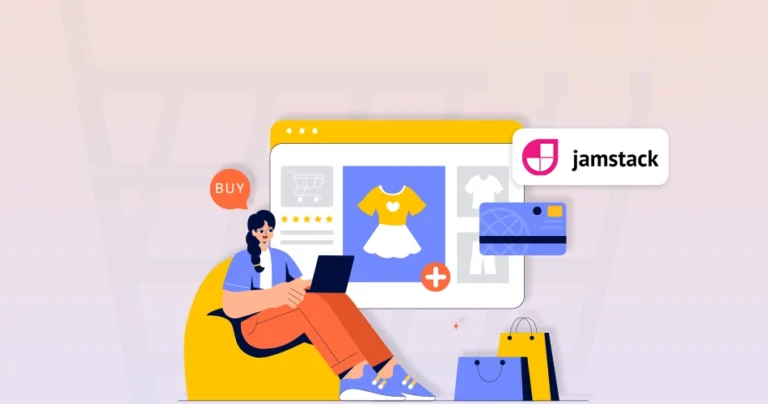Whether you’re a seasoned entrepreneur or a passionate individual starting afresh, starting an eCommerce business is perfect. It allows you to showcase your unique brand and styles and reach a wider audience than ever before. But how do you create a good eStore for clothing business? Well, you need the perfect eCommerce development platform.
The platform you select acts as the foundation for your virtual storefront. It should be robust enough to handle the demands of showcasing your clothing and accessories. At the same time, it should be user-friendly enough for both you (to manage your store) and your customers (to navigate and make purchases).
In this blog, our eCommerce development experts have helped compile the best platforms for creating a clothing store. But first, let’s see what an clothing eCommerce store needs.
Key Elements of a Clothing eStore
A successful clothing eStore goes beyond just having a website with products. You will need to focus on a few key elements to ensure the best features and functionalities along with a seamless shopping experience.
- High-quality Images & Videos: Shoppers can’t physically touch your clothes, so stunning visuals are crucial. Invest in professional photography showcasing your products from multiple angles, and include lifestyle shots, short video clips to bring the products to life.
- Detailed Product Descriptions: Don’t underestimate the power of well-written descriptions. Include key details like size charts, material information, care instructions, and even fit recommendations to address customer concerns.
- Intuitive Layout: Your eStore should be a breeze to navigate. Organize your clothing by category, sub-category (e.g., dresses by style or occasion), and brand. Consider allowing users to filter by size, color, or price for a more efficient shopping experience.
- Powerful Search Functionality: Make it easy for customers to find what they’re looking for with a robust search bar. Allow searches by keyword, category, or even filter by specific features (e.g., “floral print midi skirts”).
- Secure Payment Gateway: Ensure a safe and secure checkout process with a reputable payment gateway. Integrate payment gateways like credit cards, debit cards, and popular online payment services.
- Clear Return & Exchange Policy: Provide a transparent returns and exchange policy to build customer confidence. Clearly outline eligibility criteria, timeframes, and the process for returning or exchanging items.
- Compelling Brand Story: Let your brand personality shine through! Craft a captivating brand story about your inspiration, values, and target audience. This helps customers connect with your brand on a deeper level.
- Cohesive Design: Maintain a consistent visual theme throughout your eStore that reflects your brand identity. This includes color palettes, fonts, and imagery that create a recognizable and visually appealing experience.
- Customer Reviews & Ratings: Encourage customer reviews and display them prominently. Positive feedback builds trust and social proof, influencing buying decisions.
Remember, a successful online clothing store is more than just a collection of products – it’s a carefully curated brand experience. You can opt for our eCommerce consulting services to get a better idea on what else to include in your clothing eStore.
Top eCommerce Platforms for Clothing Stores
There are some outstanding eCommerce development platforms available in the market. But not all of them will be suitable for starting a clothing store. So here are the top options.
Shopify
Shopify shines with its ease of use and beginner-friendly interface. It boasts a vast selection of themes designed specifically for clothing stores, allowing you to create a beautiful and professional storefront without needing coding knowledge.
The app marketplace of Shopify provides access to a wide range of functionalities to enhance your store, from inventory management to tools for eCommerce marketing strategies. However, Shopify might not be ideal for highly customized storefronts or businesses with very large product catalogs due to potential limitations on scalability.
Key Features
- Intuitive and easy-to-navigate interface
- Customizable templates tailored for clothing stores
- Detailed product descriptions, including size, color, and material variants
- Automated inventory tracking and bulk inventory updates
- Extensive app store with tools for marketing, inventory management, and customer service
Price: Start from $29 per month.
WooCommerce
WooCommerce is an open-source platform built on WordPress, making it a cost-effective option with high customizability. This is ideal for businesses with existing WordPress websites who want to seamlessly add eCommerce functionality.
However, creating an eCommerce website with WooCommerce may require some technical expertise. Additionally, its plugin-based system can lead to compatibility issues or slow loading times if not managed carefully.
Key Features
- Extensive customization options via WordPress plugins and themes
- Access to thousands of themes, including ones specifically for clothing stores
- Unlimited products with detailed descriptions and variations
- Stock levels tracking and alerts
- Extensive marketing plugins for email campaigns, social media, and more
Price: Free to use. But the hosting, domain, plugins, and themes may cost you depending on your choices.
BigCommerce
BigCommerce is a robust platform that caters well to growing businesses. It boasts built-in SEO features and product filtering options, making it great for maximizing product visibility and user experience.
BigCommerce also offers strong built-in inventory management and marketing tools. While user-friendly, it might require more technical knowledge to set up and manage compared to Shopify.
Key Features
- Advanced customization with HTML, CSS, and JavaScript
- Customizable product options like size, color, and material
- No transaction fees with certain gateways
- Abandoned cart recovery and discount codes
- Wide range of apps for additional functionalities
Price: Starts from $29 per month.
Squarespace
Squarespace is known for its beautiful website templates and user-friendly drag-and-drop interface. While it offers eCommerce functionality, it might not be the most feature-rich option for complex clothing stores. Squarespace may have limitations on product customization and integrations compared to other platforms on this list.
Key Features
- Fully customizable design with drag-and-drop functionality
- Detailed product descriptions with variant options
- Supports Apple Pay, Stripe, and PayPal, along with other mobile payments
- Social media integration and promotional pop-ups
- Integrates with third-party services like ShipStation and Printful
Price: Starts from $16 per month.
OpenCart
OpenCart is another open-source platform offering high customizability and a free download. Similar to WooCommerce, it requires technical expertise to set up, maintain, and secure. OpenCart might have a steeper learning curve and require more development resources compared to some of the other options.
Remember, the best platform depends on your specific needs and technical skills. Consider your budget, technical expertise, and future growth plans to make an informed decision. If you need help with choosing the platform and creating an online clothing store, consult with our eCommerce development company.
Key Features
- Completely open-source, allowing for extensive customization
- Customizable design with access to HTML and CSS
- Support for multiple product variants and attributes
- Stock control features and low stock alerts
- Discount coupons, gift vouchers, and affiliate system
Price: Consult with our eCommerce experts for OpenCart pricing details.
Remember, the best platform depends on your specific needs and technical skills. Consider your budget, technical expertise, and future growth plans to make an informed decision. If you need help with choosing the platform and creating an online clothing store, consult with our eCommerce development company.
FAQs on Best eCommerce Platforms for Clothing Store
How can an eCommerce platform help my clothing store?
An eCommerce platform can help you create an outstanding clothing store. You can showcase and sell your products, manage inventory, and reach a larger audience through marketing and advertising tools.
Can I integrate my existing website with an eCommerce platform for my clothing store?
Yes, most eCommerce platforms offer integration options for existing websites. You may need to hire a developer or use a third-party integration tool to connect your website to the eCommerce platform.
How do I choose between different eCommerce platforms for my clothing store?
When choosing between different eCommerce platforms for your clothing store, consider factors such as pricing, features, ease of use, customer support, and scalability. That will help determine which one best fits your business needs and goals.
Conclusion
Launching a thriving online clothing store requires more than just stylish products. Selecting the right eCommerce platform serves as the foundation for your virtual storefront.
When selecting an eCommerce platform for clothing, consider its key elements. That includes mobile-friendliness, inventory management, high-quality product presentation, secure payment processing, and marketing tools. Some of the common eCommerce platforms include Shopify, WooCommerce, BigCommerce, Squarespace, and OpenCart.
If you want help with creating a clothing eStore, consult with our experts today!






